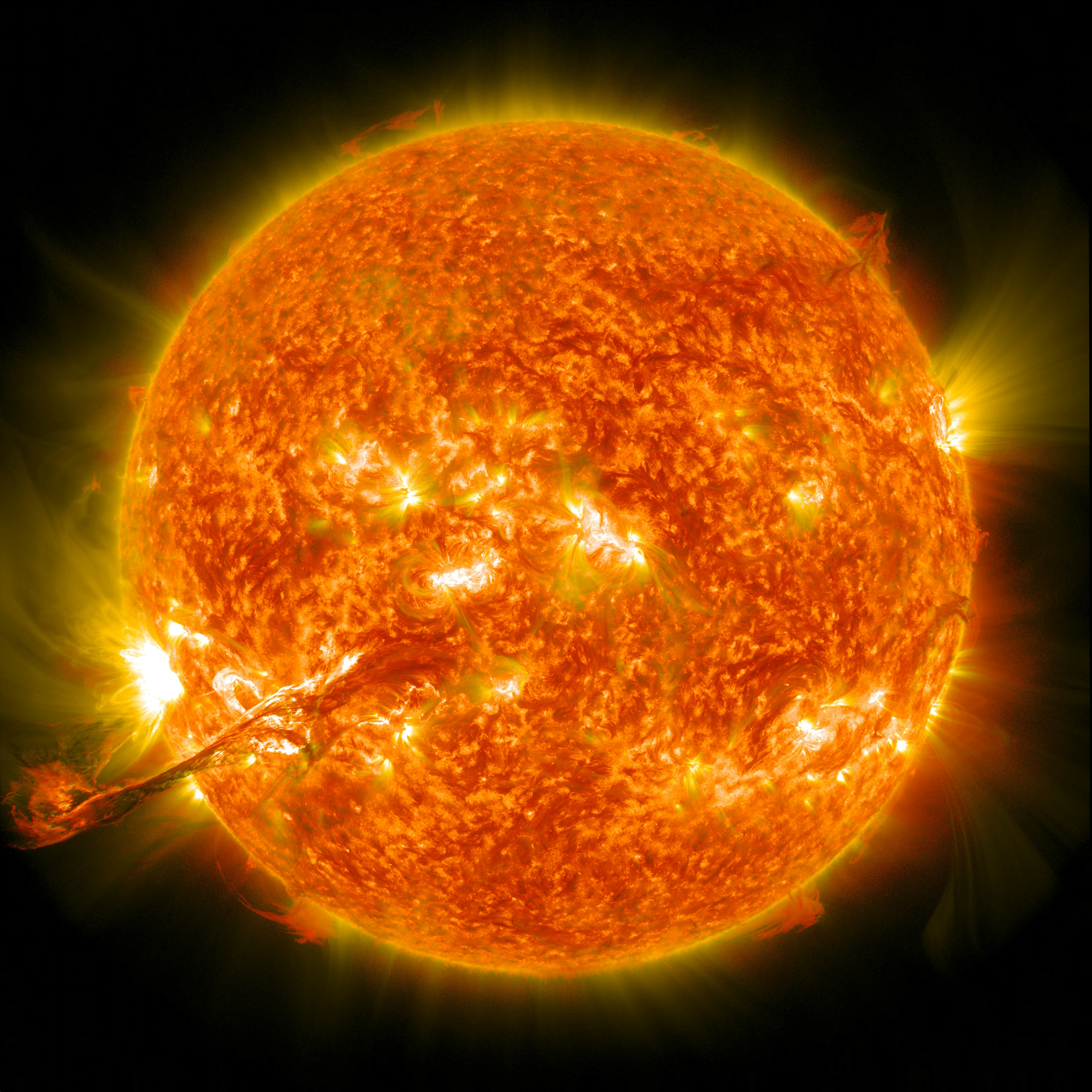Breathing all the time, we seldom consider what it means. We’re too busy and preoccupied to remember how our breath, our Life, depends on an ancient and beautiful biosphere. Mindful Biology reminds us to appreciate our true situation as human, mammalian organisms.
We live embedded in a sea of air. Oxygen forms about a fifth of the atmosphere that surrounds us, and it is central to our ability to move and imagine. Remember that oxygen is given to us by photosynthesis. Plants and algae release it as a waste product as they make sugar out of carbon dioxide (our own waste gas) and water.
Imagine photons bursting into existence deep within the Sun. Because the solar interior is so dense with matter and energy, they take thousands of years reach the surface. But once they exit our star, they take a mere eight minutes to reach Earth.
Photons pour down onto trees, other plants, algae, and phytoplankton. Biomolecules absorb the light and use it to make sugars, which feed into many other biochemical reactions.
With your next in-breath, appreciate how the air you breath connects you to the plants on earth and the power of the sun. Feel the subtle breeze at your nostrils. Notice how it is slightly cool and bracing as it enters. Exhaled air, in contrast, feels warm and moist. For a few breaths, observe this changes in sensation around your nostrils: cool and fresh on the inhale, warm and moist on the exhale.
Now follow that sensation higher into the nasal passages. In tall but narrow spaces below and between your eyes, air moves from nostrils to throat. It flows over a folded surface of nasal mucosa that filters, warms, and humidifies it. As you tune into the sensation in these spaces, you can find that same alternation of cool freshness on inhalation and warm humidity on exhalation.
See if you can track that alternation further back, into the pharynx that connects nose and mouth. Can you feel the the lively coolness at the back of your throat on the inhalation? Can you feel the soothing warmth on exhalation?
It is even possible to follow such changes deeper, past the larynx (voice box) and into the upper chest. The alternation becomes very subtle, but there is still a shift in sensation between incoming and outgoing breaths.
Using your imagination, you can follow the air all the way down, visualizing it in contact with the surfaces of your alveoli, the little air sacs where oxygen is absorbed into your blood and carbon dioxide released. This gas exchange connects you in the most intimate way with the surrounding atmosphere, itself a layer of the earth. It connects you with forests, grasslands, plankton, and kelp beds. It even connects you with nuclear fusion, so far away and deep within the sun.
See if you can visualize this oxygen flowing to your feet and hands, ankles and wrists, knees and elbows, hips and shoulders. It flows throughout your torso and up into your head and neck. It is used to ‘burn’ sugars and other chemicals from food you’ve eaten. It thus fuels your limbs and the vital organs in your pelvis, abdomen, and chest.
In complex ways that are far from completely understood, the oxygen that flows through your bloodstream also energizes your brain and supports the very awareness that allows you to move through this meditation.
Breathing with this awareness can be an easy portal to one of Mindful Biology’s three roots: Awe.

